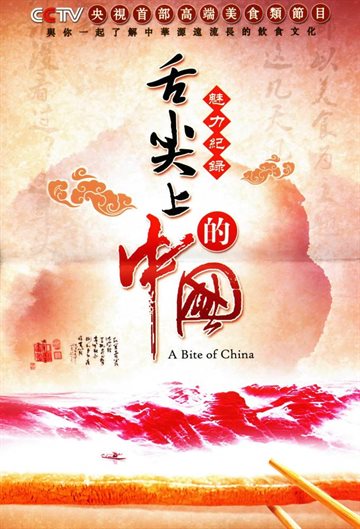舌尖上的中国第一季
In the law of eating, flavor is more important than everything. The Chinese have never tied themselves down to a boring food list. With an understanding of food, people seek inspiration for transformation through constant attempts.
The ancient city of Jianshui, located in the Honghe area of Yunnan, was called Lin'an in ancient times. It is a multi-ethnic settlement, and the doping of various cultures has formed a unique atmosphere and pattern. Beside the most famous Daban well in Jianshui, women build an assembly line of tofu with just the cooperation of their fingers.
The Daban Well, which was built in the early Ming Dynasty, has an astonishing three-meter diameter, and it still maintains its vitality hundreds of years later. The Chinese believe that water nourishes one's spirituality and enlightenment. This is like water shaping tofu. There is an indescribable commonality between the two.
Yao Guiwen and Wang Cuihua's life around tofu is simple and hard. My husband's greatest wish is to be able to go fishing in a distant lake, although he has never fished before. In the eyes of the couple, every piece of tofu is precious. They can help them support their children and live a happy and stable life.
In late September, the Ujimqin Grassland has lost its green color. Meng Ke and his family seized the time to do the final grazing before the severe winter. Milk tea is always the protagonist in breakfast. Brick tea, butter, fried rice, and fresh milk are the important contents of a pot of milk tea.
Panna cotta was made a few days ago. People on the grasslands cannot do without milk tea and milk tofu. Vitamins and minerals that cannot be supplemented by vegetables and fruits can be obtained from here.
All the way to the south, Yunnan, thousands of kilometers away, is almost the same situation. The Bai people use similar methods to transform the milk here. The breast fan was hung to dry in the courtyard, like a huge wind chime.
This kind of tacit understanding, which is thousands of miles away, may be traced back to the time when the Mongols opened up their territories. More than 800 years ago, the Mongols in Kublai Khan's period went to Yunnan on an expedition. The Mongolians who settled here also brought the taste of milk food from their distant hometown. They would not have imagined that this method of transformation has been handed down and is full of vitality.
Soy foods are the only plant-based foods that can compete with meat in terms of protein. For vegetarians, this is perfect. The ancient Chinese praised tofu for its harmony and virtue. People who eat tofu can live in poverty, and those who make tofu also know how to "let nature take its course".
In the south of Anhui, the unique geographical environment and warm climate have contributed to the calm and conservative temperament of the people, and also gave birth to a unique food - edamame. Fang Xingyu does not make edamame in hot and humid summer. In sauna days, it is difficult for people to control the direction of tofu fermentation. But in other seasons, the warm environment in Huizhou can guide the microbes on the right track of fermentation. She hopes that her daughter can learn and comprehend everything related to this.
The clever Chinese are very good at using these tiny creatures. In fact, the wisdom of this transformation has been shining brightly in the farther ages.
Rice wine is one of the oldest wines in the world. Alcohol should be the earliest case of people using microorganisms. In the early morning of Lidong, the sky of Shaoxing began to rain lightly. This is a good sign for winemakers. Yeast likes the long but not severe cold of Jiangnan winter.
Shaoxing has been a prosperous and prosperous place since ancient times. Today, people in Shaoxing are still happy to live by the river and enjoy the leisure. In the soy sauce garden, hundreds of huge sauce vats are lined up in the open space. Fifty-six-year-old Ding Guoyun is still in good shape. The sauce is viscous and heavy, and it needs manpower to turn it up and down regularly so that the fermentation in the sauce tank will be even. In these sauce vats, the world of microorganisms ebbs and flows and restricts each other. "Chinese sauce" is unique in the history of human fermentation. For thousands of years, it has become the basis of taste on Chinese tables.
In northern China, the meaning of sauce is more direct. In another three months, it will be time for the new sauce, but the preparation work starts now. Making sauce is a big deal for people in Northeast China, and neighbors also rushed over to help. Cooked soybeans are mashed directly in the pot. In Northeast China, people only use soybeans to make sauce. Such singleness is also a luxury.
On the warm kang, six hands work together to form the bean paste. The taste of the sauce can even become a measure of whether a housewife is qualified or not. Finally, it is wrapped with air-permeable yellow paper and tied into a strong sauce base. The sauce blanks were hung on the wall. They fermented quietly for the next two months. Wait until next spring to begin a deeper transformation.
All these imaginative transformations, the flavor and nutritional enhancements they create are breathtaking; and form a part called culture that is passed on.




















































